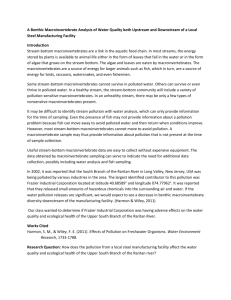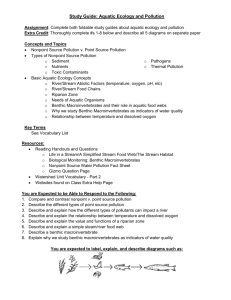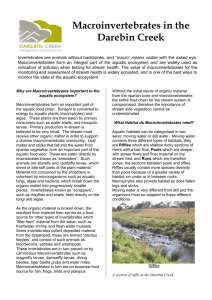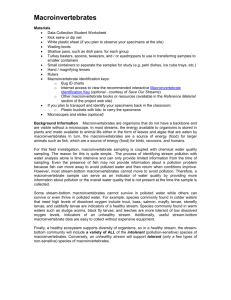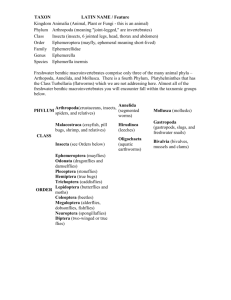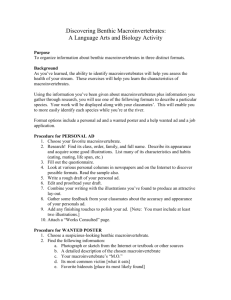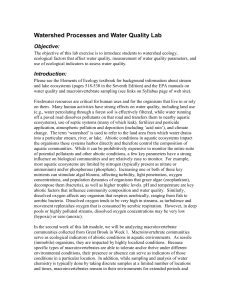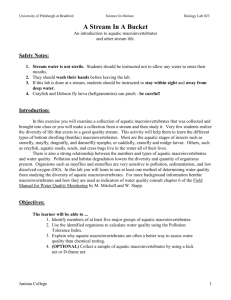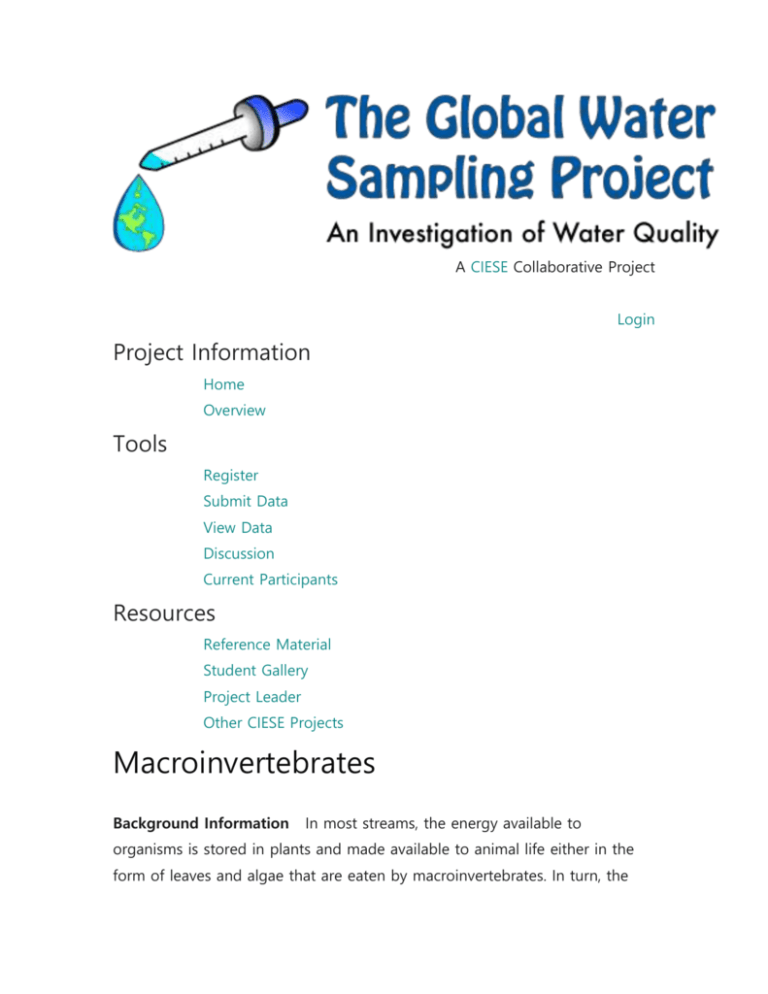
A CIESE Collaborative Project
Login
Project Information
Home
Overview
Tools
Register
Submit Data
View Data
Discussion
Current Participants
Resources
Reference Material
Student Gallery
Project Leader
Other CIESE Projects
Macroinvertebrates
Background Information
In most streams, the energy available to
organisms is stored in plants and made available to animal life either in the
form of leaves and algae that are eaten by macroinvertebrates. In turn, the
macroinvertebrates are a source of energy (food) for larger animals such as
fish, which are a source of energy (food) for birds, raccoons, and
humans.
Besides being an important link in the food chain,
macroinvertebrates can also serve as an indicator of water quality. Some
stream-bottom macroinvertebrates cannot survive in polluted water while
others can survive or even thrive in polluted water. A healthy ecosystem
supports diversity of organisms, so in a healthy stream, the stream-bottom
community will include a variety of pollution-sensitive macroinvertebrates.
Conversely, an unhealthy stream will support only a few types of nonsensitve
macroinvertebrates.
In this project, macroinvertebrate sampling is coupled
with chemical water quality sampling. The reason for this is quite simple. The
process of identifying stream pollution with water analysis alone is time
intensive and can only provide information for the time of sampling. Even the
presence of fish may not provide information about a pollution problem
because fish can move away to avoid polluted water and then return when
conditions improve. However, most stream-bottom macroinvertebrates cannot
move to avoid pollution. A macroinvertebrate sample may provide more
information about pollution or overall water quality that is not present at the
time of sample collection.
Useful stream-bottom macroinvertebrate data
are easy to collect without expensive equipment.
Test Procedure
The two most common methods to sample
macroinvertebrates include the kick net or the dip net methods. The kick net
is most efficient for sampling streams with rocky or gravel stream beds where
the velocity of the water will move the dislodged organisms into the net. The
dip net method can be used in a variety of habitats and used like the kick net
or used for scooping through the water.
The first step is to select a
sampling site to ensure that the appropriate equipment is obtained. Find a
riffle that is typical of the stream. A good riffle for sampling will have cobblesized stones, fast-moving water, and a depth of 3 to 12 inches. Select a 3-foot
by 3-foot area within the riffle for sampling.
Position the kick net at the
downstream end of the sampling area and proceed slowly walking upstream.
The net should be stretched out to its full 3-foot width with the bottom edge
lying firmly against the stream bed. No water should wash under or over the
net. If needed, small rocks can be used to weigh down the bottom edge of
the net. A "kick" is a stationary sampling accomplished by using the toe or
heel of a boot and dislodging the upper layer of the stream bed one meter at
a time. If larger substrate is encountered, such as a large piece of wood, the
object should be picked up and rubber by hand or small brush to dislodge
the attached organisms.
NOTE: To avoid losing macroinvertebrates that should be part of the sample,
do not stand in or disturb the sampling area before the kick seine is in place.
Lift the kick seine out of the water with a forward scooping motion. The
object is to avoid losing any macroinvertebrate specimens while the seine is
lifted. This will be easier if one person holds the top of the kick seine handles
while the other person holds the bottom of the handles.
Carry the kick
seine to the stream bank and spread it out flat on a piece of white plastic.
Carefully examine the net and the collected debris for macroinvertebrates.
Look carefully as many specimens will be small and hard to see. Using
tweezers or fingers, place all the specimens in white containers filled with
stream water. Sort them into different types as you remove them from the
net, and place each type in a separate container.Ice cube trays are very
effective for this process.
NOTE: If your plan is to transport the sample
back to your "lab" before sorting and identification, you can place the
contents of the kick seine (including the debris) into a bucket that is partly
filled with stream water. If you put a lid on the bucket (recommended), you
should leave some air space above the water in the bucket to allow mixing of
oxygen.
Once the macroinvertebrates are collected and sorted, they can
be identified by using the Save Our Streams Macroinvertebrate Identification
Key.
Record and submit the results to the project data base.
What to
Expect
The Guidelines established by the Save Our Streams Program will be
followed for this project. Save Our Streams identifies three groups of
macroinvertebrates based on their sensitivity to pollution: pollution sensitive,
somewhat pollution tolerant and pollution tolerant. The Save Our Streams
method involves collecting a sample of macroinvertebrates from the stream,
identifying the organisms and rating the water quality. Water quality ratings
of excellent, good, fair, and poor are based on the pollution tolerance levels
of the organisms found and the diversity of organisms in the sample. A
stream with excellent water quality should support organisms from all three
pollution tolerance groups.
Indicators of good water quality
Mayfly
larvae
Caddisfly larvae
Stonefly larvae
Gilled snails
Riffle Beetle adult
Planaria
Water Peeny
Hellgramite
Indicators of fair water
quality
Crayfish
Riffle Beetle - larva
Dragonfly
Cranefly
larvae
Damselfly
Scuds
Alderfly
Sowbug
Watersnipe Fly
Whirligig
Beetle - larva
Fishfly
Clam or Mussel
Indicators of poor water
quality
Midge fly larvae
Blackfly larvae
Leeches
Aquatic worms
Lung
snails
This project was developed and is managed by the Center for Innovation in Engineering and
Science Education (CIESE), which is located at Stevens Institute of Technology in Hoboken,
New Jersey.
© Copyright 2014 All Rights Reserved
The Center for Innovation in Science and Engineering
Stevens Institute of Technology
Reference Material
Student Gallery
Project Leader
Other CIESE Projects
Register
Submit Data
View Data
Discussion
Current Participants
Home
Overview


